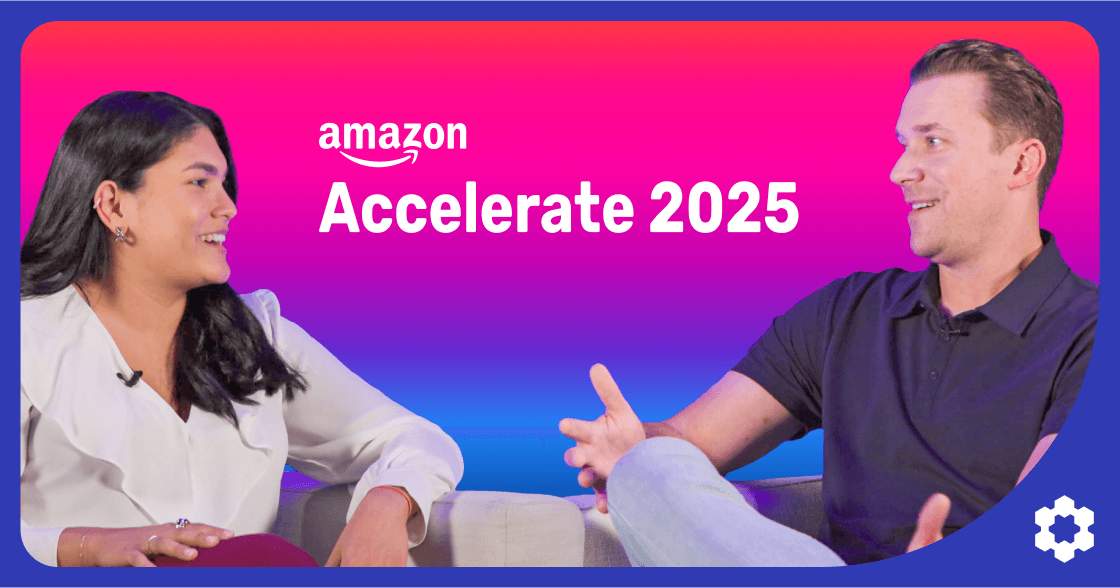Listen to This Article
Amazon Updates You Need to Know This Week
This week’s Amazon seller news roundup brings you the latest updates that every seller should know to stay ahead in the game. From major changes to popular Amazon features to new tools and developments, here’s what’s making waves:
- Amazon DSP’s Upgrades and Ambitions: With new APIs for seamless campaign management and ambitions to dominate the DSP landscape, Amazon is using its deep shopper data and expanding reach across the open web to challenge industry leaders.
- Amazon ending its ‘Try Before You Buy’ program: The “Try Before You Buy” program will be discontinued at the end of January, making way for Amazon’s AI-driven virtual fitting tools. This transition underscores Amazon’s growing investment in artificial intelligence to enhance shopping experiences.
These Amazon seller updates highlight crucial shifts and opportunities for you to optimize your business. Don’t miss out—continue reading to learn how to make the most of new tools and developments.
Amazon DSP Takes on Industry Giants with New Tools and Insights
Amazon is redefining programmatic advertising with upgrades to its Demand-Side Platform (DSP). From advanced creative APIs to its bold ambitions of becoming the primary DSP for advertisers, Amazon is positioned as a formidable player in the digital advertising ecosystem.
New Amazon DSP Campaign and Creative APIs
Amazon has introduced new APIs for managing DSP campaigns, a feature that promises greater efficiency and customization. These APIs allow advertisers to:
- Streamline workflows: Create, read, and update campaigns, ad groups, targets, and creatives programmatically, reducing activation time.
- Enhance data control: Store and manage campaign data locally, offering advertisers more autonomy over analytics.
- Optimize in real-time: Automate optimizations for bids, budgets, and audiences to maximize performance.
- Integrate seamlessly: Connect DSP operations with existing tech stacks, enabling real-time tracking and syncing with proprietary tools.
This update empowers advertisers to reduce manual work, improve Amazon DSP campaign performance, and focus on strategic decision-making.
Demystify Amazon DSP with our comprehensive DSP white paper. Learn how top brands leverage Amazon’s first-party data to create powerful retargeting campaigns and reach high-intent customers across multiple platforms. Download your free DSP guide now.
Amazon’s DSP Ambitions
Amazon’s evolution from a retail media channel to a comprehensive programmatic platform is reshaping how advertisers approach digital marketing.
Vice President of Amazon Ads, Kelly MacLean, told DigiDay that many advertisers are now using Amazon DSP as their primary tool for buying ads across Amazon’s media properties and the broader web. With competitive cost per thousand (ad impressions), ranging from $2.50 to $4 for standard and remarketing audiences, Amazon is attracting ad dollars away from established players like Google’s DV360 and The Trade Desk.
Why Advertisers Are Taking Notice
Over the past three years, Amazon has transformed its DSP by:
- Expanding cross-channel capabilities: Integrations with Amazon Marketing Cloud and Publisher Cloud provide richer data insights.
- Improving user experience: Tools like Performance+ deliver sharper optimization and creative options.
- Leveraging unique data: By focusing on shopper behavior rather than third-party cookies, Amazon offers precise targeting and measurable results.
- Lowering costs: With a 1% take rate on programmatic guaranteed deals (versus Google’s 4%), Amazon’s DSP offers considerable cost savings compared to competitors.
The Road Ahead
While still considered a challenger in the programmatic space, Amazon’s focus on innovation and integration positions it as a likely frontrunner in the coming years. In a statement to DigiDay, Kevin Weiss, VP of Retail Media at Skai, predicts that by 2026, Amazon could either lead the market or become a dominant rival to existing DSPs.
Amazon’s DSP future hinges on its ability to attract advertisers beyond its retail ecosystem. By building proprietary pathways to supply and expanding ad offerings across platforms like Prime Video and the open web, Amazon aims to make its DSP indispensable for all digital marketers. As Jared Belsky, Co-Founder of Acadia, notes, “Amazon bridges the gap between ad dollars and sales outcomes”—a feat other DSPs struggle to replicate.
Expand your reach with DSP Prime. Our expert-managed advertising solution leverages Amazon’s first-party data to connect your brand with high-intent audiences across websites, apps, and streaming platforms. Get your customized growth plan now and launch in just 10 days.
Amazon Replaces “Try Before You Buy” With AI Tools
Amazon is officially retiring its popular “Prime Try Before You Buy” program on January 31, 2025.
Launched in 2018, the service allowed Prime members to try on clothing, shoes, and accessories at home before committing to a purchase. In its place, Amazon is leaning into artificial intelligence to elevate the shopping experience with tools like Virtual Try-On, personalized size recommendations, and improved size charts.
Key highlights of the transition:

- Generative AI: Amazon uses powerful models like the Diffuse-to-Choose system, which allows users to virtually place clothing or other items on their own images in natural settings. This creates a realistic visualization of how products will look in real life.
- Improved Personalization: The virtual try-on tools also take into account a shopper’s size history and purchase patterns, ensuring that the virtual try-on suggestions are tailored for an optimal fit.
- Ease of Use: The system is fast and scalable, generating product visualizations in just a few seconds. It works on various product categories, including clothing, shoes, and accessories, without requiring professional-grade photos or 3D models.
- Why the Change? Amazon cites the limited scalability of “Try Before You Buy” and increased adoption of AI features among customers as reasons for the shift. The company also notes its billion-dollar investments in AI, such as its “AI Shopping Guides,” to make product research and purchases more seamless. This move could also substantially lower the return shipping costs that have been associated with Try-Before-You-Buy transactions.
- Free Returns Remain: Despite the Try Before You Buy program’s end, Amazon assures customers that its free return policy for most apparel will remain, according to TechRadar.
For sellers, the change signals a growing reliance on AI in ecommerce, which could reduce return-related costs and streamline inventory management. However, sellers may need to invest in optimizing their listings with accurate sizing and appealing imagery to work effectively with AI-driven recommendations.
Other Amazon Seller Updates This Week
- Save on Cross-Border Shipments: Sellers can now benefit from a 10% discount on AVASK customs brokerage fees for shipments between the EU and the UK, along with other perks offered through the new Advantage Loyalty program.
- Amazon Expands in Fintech with Axio Acquisition: Amazon has announced plans to acquire Axio, a leading Buy Now Pay Later startup in India. Leveraging Axio’s decade-long expertise in providing credit to over 10 million users, this $150M move highlights Amazon’s focus on expanding further into the India marketplace and making it easier for customers to make larger purchases on the platform.
- Flexible Freight Opportunities with Amazon Relay: Amazon Relay opens its freight network to carriers of all sizes, offering flexible access to loads and contracts via a mobile app or web portal, further expanding Amazon’s logistics and supply chain control.
- Apply for Amazon’s Sustainability Accelerator: Brand owners with sustainable products can apply for the Amazon Sustainability Accelerator program by March 7, 2025. Selected startups will receive £20,000 in grants, expert mentorship, and access to resources to grow their sustainable businesses.
- Amazon Prime Air advances drone safety with radar tests and software updates: Amazon Prime Air has applied for a two-year experimental license to test radar technologies for drone air traffic control, improving safety around its facilities. Concurrently, the company has voluntarily paused drone deliveries in Tolleson, Arizona, and Texas to implement software updates to ensure continued compliance with the Federal Aviation Administration.
- FTC investigates Publishing.com for AI-generated books: The Federal Trade Commission (FTC) is investigating Publishing.com for allegedly misleading customers about the true costs of creating and selling AI-generated books. The controversy raises questions about the impact of AI-created content on marketplaces like Amazon as well as the shady selling tactics of side-hustle ecommerce gurus.
Embrace Change with These Key Strategies
This week’s Amazon seller updates showcase major changes across the platform, from its evolving advertising tools to transitioning to AI tools and features for reduced return rates.
For sellers, staying ahead of these developments requires not only understanding the shifting market but also taking actionable steps to optimize your business and navigate the challenges posed by new features and methods.
Actionable Strategies
- Leverage DSP Tools: Take advantage of Amazon’s new DSP APIs to streamline workflows, optimize campaigns, and integrate with your tech stack for better targeting and control.
- Optimize Listings for AI: Ensure your listings are AI-friendly with accurate sizing, high-quality images, and detailed descriptions to align with Amazon’s AI-driven shopping tools.
- Stay Updated on Advancements: Regularly review the latest developments in AI and DSP technologies to adapt your strategies, stay competitive, and ensure you’re utilizing the most current tools and tactics for maximum performance.
For nearly four years, we’ve kept sellers informed with our Amazon FBA Newsletter, publishing over 200 issues packed with policy changes, announcements, and community events. Subscribe or share with your team to get these Amazon seller updates and insights delivered weekly.








